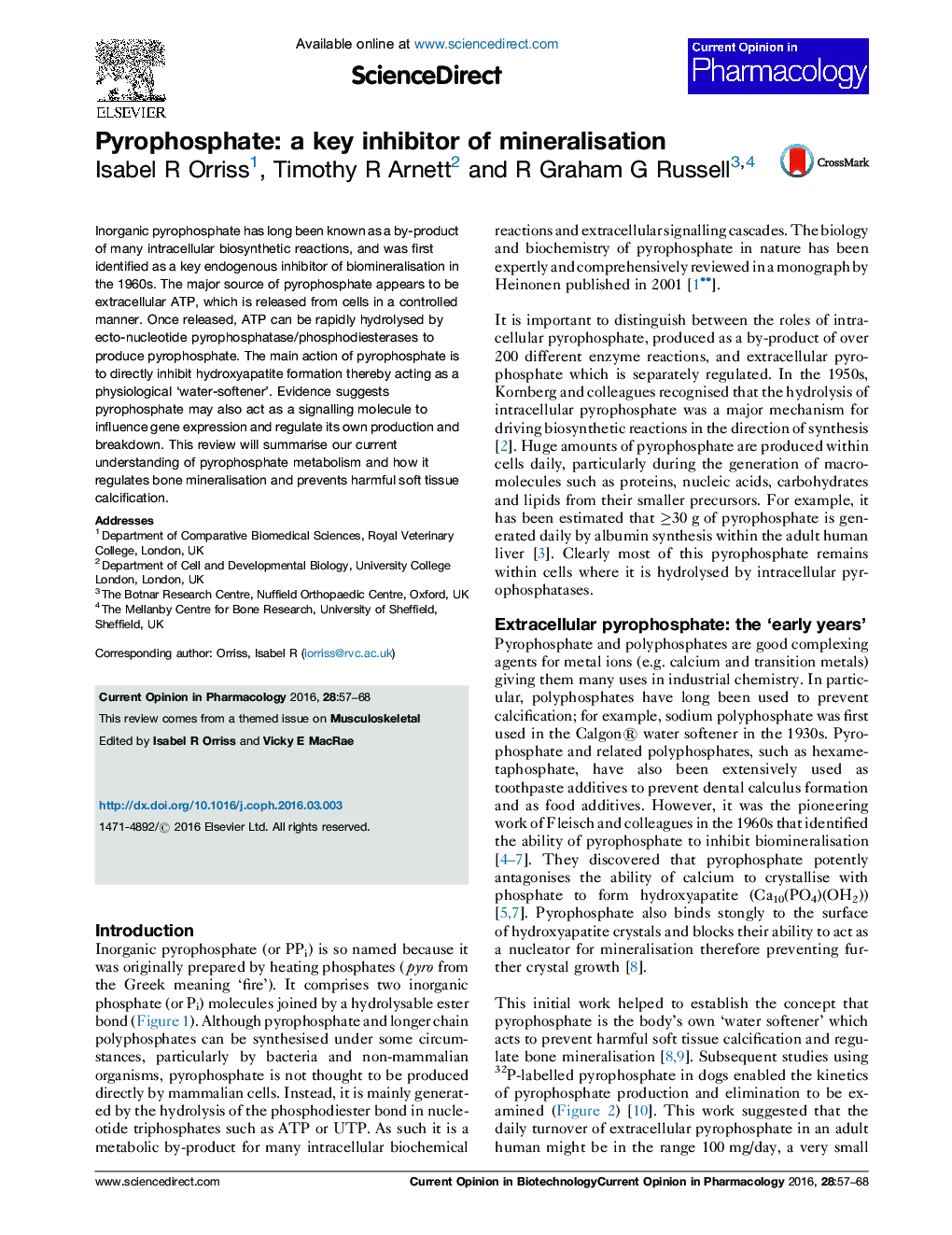| Article ID | Journal | Published Year | Pages | File Type |
|---|---|---|---|---|
| 5825895 | Current Opinion in Pharmacology | 2016 | 12 Pages |
Abstract
Inorganic pyrophosphate has long been known as a by-product of many intracellular biosynthetic reactions, and was first identified as a key endogenous inhibitor of biomineralisation in the 1960s. The major source of pyrophosphate appears to be extracellular ATP, which is released from cells in a controlled manner. Once released, ATP can be rapidly hydrolysed by ecto-nucleotide pyrophosphatase/phosphodiesterases to produce pyrophosphate. The main action of pyrophosphate is to directly inhibit hydroxyapatite formation thereby acting as a physiological 'water-softener'. Evidence suggests pyrophosphate may also act as a signalling molecule to influence gene expression and regulate its own production and breakdown. This review will summarise our current understanding of pyrophosphate metabolism and how it regulates bone mineralisation and prevents harmful soft tissue calcification.
Related Topics
Life Sciences
Neuroscience
Cellular and Molecular Neuroscience
Authors
Isabel R Orriss, Timothy R Arnett, R Graham G Russell,
